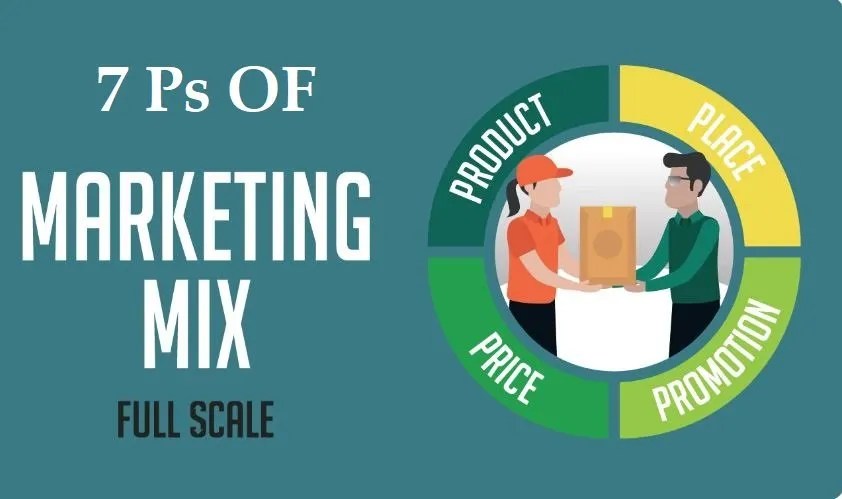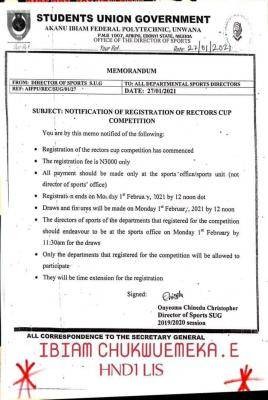
Marketing entails putting the right product at the right place and time. Sounds easy! Simply develop a product that a specific group of people desire, put it on sale somewhere those same people frequent, and price it at a level that reflects the value they believe they receive; and do all of that when they want to buy.
To accomplish this effectively, however, considerable effort must be expended in determining what people desire and where they purchase. Then you must figure out how to manufacture the item at a price that offers value to them and get it all together.
However, getting even one component wrong might be disastrous. You could be left promoting a car with excellent fuel economy in a place where fuel is really cheap, fail to publish a textbook before a new school year begins, or fund yourself in a piston where you are offering an item at an unbalanced price to attract your target reach.
The marketing mix and the 4Ps of marketing are excellent instruments for avoiding such errors. In the rest of this article, you will discover more about the marketing mix, 4Ps of marketing and alternative marketing models.
What is Marketing mix?
The marketing mix is the combination of components used as part of a company’s marketing strategy. A marketer can influence a customer’s decision to buy their product or service.
Neil Borden, a Harvard Business School professor, created the term marketing mix in his presidential address to the American Marketing Association (AMA) in 1953.
What are the 4Ps of Marketing?
Borden claimed that his inspiration to formalize the concept marketing mix came from his associate, James Culliton, who equated great marketers to skilled chefs. Culliton’s analogy was that excellent chefs, like successful marketers, follow a recipe but are constantly willing to try new ingredients and make changes on the fly in reaction to market conditions and client demand. Consumer incentives for purchasing, the competitive landscape, and government laws, according to Borden, are some of the forces that might affect a marketing mix.
A marketing mix can be any combination of characteristics, although it is most usually associated with the four Ps of marketing: product, pricing, promotion, and place. Each of these four Ps has the potential to impact a consumer’s decision.
Marketers may eliminate luck from the equation by thinking systematically about product, price, promotion, and location. Marketers can use the 4 Ps framework and the concept of a marketing mix to help them think about and design a successful launch and marketing plan.
The four P’s are interconnected and function together. While other marketing principles have evolved over time, the four P’s remain the foundation of every practical marketing approach. Each P is broken down and illustrated below.
1. Product
The product or service being offered must meet the needs or desires of the customer. Products are commodities and services that solve issues and meet consumer wants. A product might be either material, like a car or apparel, or intangible, like a cruise or house cleaning service. A successful product either fills a vacuum in the market or provides a one-of-a-kind experience that increases demand.
For instance, before the release of the iPhone, most consumers were unaware of the need for a phone that would allow them to access anything at their fingertips. People were pushed to simplify their lives by carrying a smartphone that could act as a GPS, calendar, search engine, flashlight, weather guide, and calculator because of how Apple promoted its device.
Before selling a product, it is critical to understand it thoroughly. This includes learning more about the target audience and their preferences.
Before building a product, consider the following questions:
● What exactly is the product?
● Is it a particular product or service?
● What is the product’s purpose?
● Does the product meet demand or deliver a one-of-a-kind experience?
● Who are the product’s intended customers?
● What sets the product apart from the competition?
2. Price
A product should be priced appropriately for consumer expectations, neither too low nor too high.
The price of a product is the amount paid by the consumer. During product marketing, it is critical to determine pricing that represents current market trends, is affordable for consumers, and profitable for the firm. Prices might change depending on availability and demand as well as the product’s sales cycle. While some businesses may cut their costs to compete with the market, others may raise them, mainly if they are advertising a luxury brand.
Price points are critical to the success of a product. For example, if a product is pricey, only a small number of people will buy it. A product that is priced too low, on the other hand, may give buyers the impression that it is of poor quality, discouraging them from acquiring it.
Toggl Track, for example, offers monthly and annual subscription-based pricing, with customers charged based on the number of users and the organization’s size. Toggl Track cost is also tiered, which means that the price varies based on whatever services you sign up for. Although this membership plan is comparable to other enterprise and freelancer apps on the market, it is still reasonably priced. Toggl Track is a time management program that allows individuals and teams to track their time and generate reports from that data.
To find the most profitable price for a product, research the target audience and what they are willing to pay for it.
Before developing a product price plan, consider the following questions:
● What do your competitors charge for comparable products?
● What are the target users’ affordability and price ranges?
● What is the product’s lowest possible selling price?
● What is the maximum price that the product can be sold for?
● What is the appropriate pricing for the target audience?
● What is the best price for the target market?
3. Place
The location from which the goods can be purchased is critical for increasing sales—the location of the product’s storage and manufacturing. The digital transition has changed how items are sold, whether online, in small local shops or by large manufacturers. This marketing strategy also addresses where and how the product is advertised, such as in periodicals, web commercials, radio, infomercials, or film product placements.
The location is the location from where the product is marketed and distributed. For example, if you want to promote a product to elders, you should avoid TikTok. Similarly, products aimed at younger generations would garner more attention if promoted online and through social media platforms.
Not every location is appropriate for product promotion and distribution. As a result, it is critical to distribute items and meet client needs in a readily accessible location.
Before determining where to promote a product, examine the following questions:
● Where do purchasers go to look for similar items and services?
● Where does the competition offer its goods?
● What are the target audience’s shopping habits?
● Will product placement and distribution necessitate the employment of a sales team, Salesforce, or will it be self-service?
● How can the appropriate distribution channels be found?
4. Promotion
The general public must be informed about the product and its features to comprehend how it meets their wants or preferences.
Promotion is the act of reaching out to a specific audience with the correct message at the right time. It disseminates information and is an efficient technique to execute a sales promotion and communicate with customers. A promotional strategy seeks to show consumers why they need a specific product and why they should buy it over other products. At the heart of marketing communications, product promotions disseminate precise and meaningful advertising through popular channels such as social media marketing, email marketing campaigns, word-of-mouth seeding, print marketing, social networking, Instagram campaigns, television commercials, social networking, and more.
Timing can be crucial in promotional marketing. Consider the football season, when pizza delivery specials are promoted during games. This encourages people to try new items they might not have tried.
Setting the best pricing or having a superb product offering is not enough to make a product successful. The major component of the marketing mix that can distribute the goods to the people is promotion. As a result, promotional messaging should constantly cater to both the target demographic and the distribution channels.
Consider the following questions while developing a promotional strategy:
● When is the best moment to reach out to your target audience?
● What channels or methods will the target audience use to obtain information?
● What advertising strategies will be most effective for the target audience?
● Which product promotion channels are the most cost effective and efficient?
● Which segments of the target audience should be involved?
● Where are your competitors’ advertising dollars and marketing money going?
How to Implement the 4 Ps of Marketing in Your Marketing Strategy
The four Ps provide a foundation for developing your marketing plan. Consider each aspect. Don’t be concerned if the variables overlap. This is unavoidable.
- First, research the product you intend to advertise. What distinguishing features that make it attractive and engaging? Consider other similar items that are already on the market. Your product could be more durable, easier to use, more attractive, or endure longer. Its ingredients may be environmentally friendly or naturally derived. Determine the characteristics that will make it desirable to your target audience.
- Secondly, consider the proper pricing for the goods. It is more than just the cost of production plus a profit margin. You might pitch it as a premium or luxury product or as a low-cost alternative.
- The placement entails determining the type of store, both online and offline, that carries products similar to yours for customers similar to yours.
- Only in the context of your target consumer can promotion be considered. The product may appeal to a hip younger demographic, wealthy professionals, or bargain seekers. Your media plan must target the appropriate audience with the right message.
Alternative Models of Marketing
The 4 Ps notion has been around for a long time. Since these four marketing mix elements were first presented in the 1960s, a lot has changed. Some have questioned whether the 4 Ps approach is still relevant, particularly in an era of digital marketing, mobile technology, shifting markets, and consumer attitudes.
The four Ps of marketing are only one of many lists that have been compiled over the years. Others developed spinoffs of the original 4 Ps concept, such as the 4 Cs or SAVE model, to compensate for these restrictions. They are discussed further below.
The 4 Cs Model
The 4 Cs concept is a marketing mix strategy that transfers the focus from the vendor to the customer. Customer needs, prices, convenience, and communication are the four Cs.
In 1990, Robert F. Lauterborn proposed the 4 Cs as an alternative marketing mix, declaring that the 4 Ps were outdated.
Lauterborn suggested that as a marketer, you should forget about the product of the 4 Ps and focus on the consumer.
This is how it looks when broken down into a mental process:
● Instead of focusing on the product, consider the customer’s wants and needs.
● Instead of worrying about location, consider the customer’s convenience.
● Instead of pricing, consider how much it costs the client to meet these needs.
● And instead of focusing on promotion, which is a one-way street, think about communication.
The SAVE framework
SAVE stands for solution, access, value, and education in the SAVE concept. This marketing mix strategy, which also has four components, was offered as a better alternative to the 4 Ps concept. SAVE also turns the emphasis away from the product and toward the user.
The 4 Ps paradigm, according to a 2013 Harvard Business Review article presenting the SAVE model, might be restricting for B2B organizations due to its overwhelming focus on products. Customers, according to the writers, are increasingly seeking holistic solutions.
When the SAVE model is broken down into a succession of elements to focus on, it looks like this:
● Instead of thinking about products, consider solutions. Your product may have hundreds of features, but which ones specifically address genuine customer needs?
● Instead of thinking about place, which implies a fixed location, consider customer access.
● Instead of worrying about pricing, which is just a number, consider value, which includes the customer’s opinion.
● And instead of focusing on promotion, consider education. Rather than bombarding clients with advertisements, you win them over by providing them with relevant information and empowering them to make their own decisions.
The Framework of the 7 Ps of Marketing
Boom and Bitner’s 7Ps, sometimes known as the extended marketing mix, are among the numerous models that have evolved throughout the years. The 7 Ps of marketing includes three additional Ps in addition to the original four: package, positioning, and people. In his 1998 book Million Dollar Habit, Brian Tracy discusses the seven Ps.
According to Tracy, in addition to product, pricing, site, and marketing, marketers should consider how the product is packaged, positioned, and the people engaged in the process.
● People are drawn to the individuals who represent the product in today’s world, which includes not only sales and customer service representatives, but also social media influencers and viral media campaigns.
● Logistics is the process. Consumers increasingly demand quick and efficient delivery of what they want and when they want it.
● Physical evidence is likely the most technologically advanced of the seven Ps. If you’re selling diamond jewelry on a website, the consumer should be able to tell right away that you’re a real established firm that will deliver as promised. A professionally-designed website with outstanding functionality, an “About” section that includes the company’s principals and physical address, professional packaging, and rapid delivery service are all crucial to convincing the consumer that the product is legitimate.
The good news is that you do not have to choose between marketing models because they are all essentially vital and are just models on paper. They can help you think about your marketing plan, but you must develop it. Assume your friend is working on a marketing strategy for her new company. What should she include in her strategy? Whether you start with the 4 Ps or the 4 Cs, it is frequently easier to start with a list of questions or a four-step guide rather than a blank slate. Your marketing strategy must remain current and responsive to new trends and technologies. However, knowing the fundamentals never hurts.
In summary, the four (4) Ps of marketing is referred to as the marketing mix; price, product place and promotion, the 3 extended Ps of marking makes it a total of 7Ps. These are the essential aspects involved in the planning and marketing a product or service, and they interact heavily. Considering all these components is one approach to developing a comprehensive marketing plan. When preparing a new product launch, assessing an existing product, or attempting to optimize the sales of a current product, the 4Ps model can be applied. A comprehensive examination of these four factors: product, price, place, and promotion, assists a marketing professional in developing a strategy for successfully introducing or reintroducing a product to the public.




